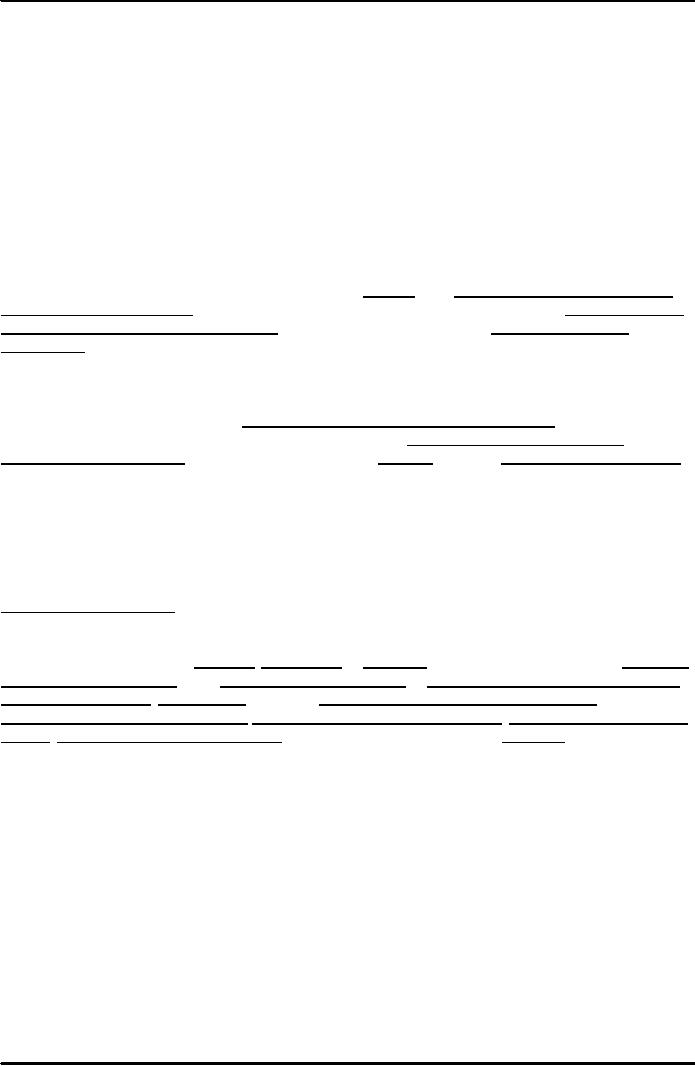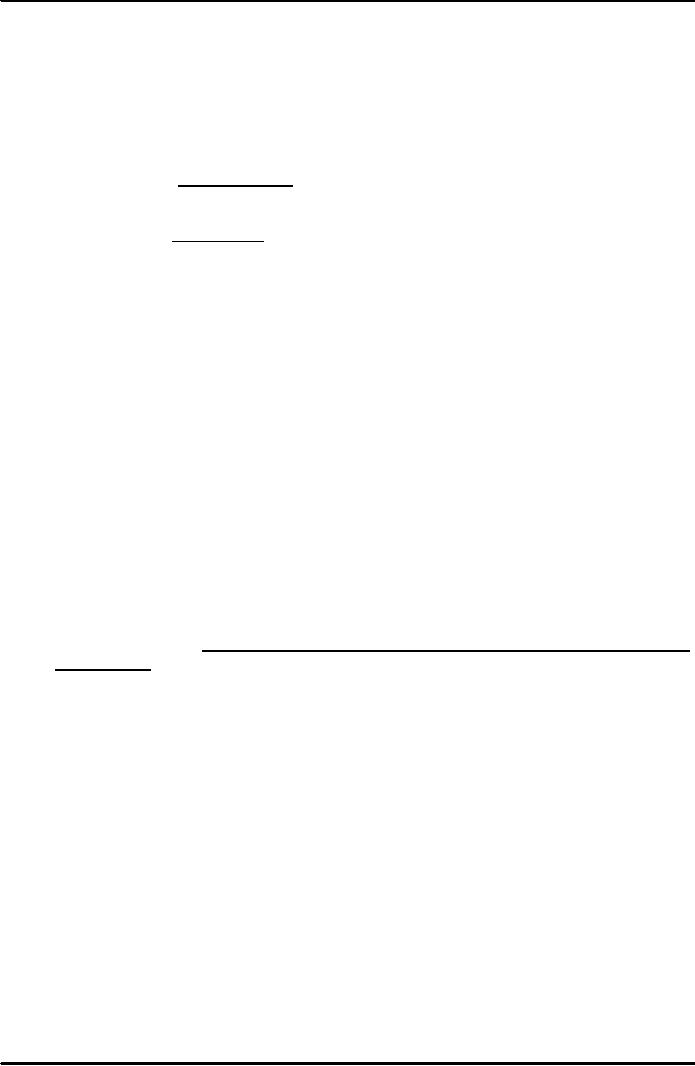 |

VU
Lesson
27
MEMORANDUM
& CIRCULAR
Purpose
of Memo
When
you wish to write to someone
within your own company,
you will send a memorandum.
Memos are
used
to communicate with other
employees, may be located whether
in the same office, in the
same
building,
or in a branch office many
miles away.
Because
the interoffice memorandum form
was developed to save time, the formality
of an inside
addresses,
salutation, and complimentary closing is
omitted. Otherwise, however, office
memos and letters
have
a great deal in
common.
Formality
is Omitted
The
memorandum or `memo' is a very flexible
form
used
within an organization for
communication
at all levels and
for many different reasons.
It performs internally the same
function as
a
letter does in external
communication by an organization,
it is used for reports,
briefings or
instructions,
brief messages or `notes'
and any kind of internal
communication that is more easily or
clearly
conveyed
in writing (rather than face-to-face or on the
telephone).
Tone
of Memorandums
In
most companies and organization,
memorandums
are written in the first
person, just
as business
letters
are. Informal writing style
characterizes the memos. The
tone
of the memo is influenced
by
the
position
held by the writer in
relation to that held by the
receiver.
Also, the topic
under consideration
plays
an important part in determining tone.
Obviously a person writing to a
company official to report
the
results
of a financial audit will be
more formal than a person
writing a co-worker about some
routine
matter.
An
important factor is the personality of the
individual receiving the memorandum. The
president,
for
example, may insist on
informality, whereas a peer
might like a formal,
impersonal tone. Therefore, the
effective
business writer must
evaluate the position of the reader, the
topic under consideration, and the
personality
of the reader when
setting the tone of the
memo.
Flow
of Memo
A
memorandum may be send
upwards,
downwards
or
sideways
in the
organization. It may be sent
from
one
individual to another, from
one
department to another or
from
one individual to a department
or
larger body of staff.
The
channel will
be the internal
mail system of the
organization,
which may
range
from a bank of `pigeon
holes' for delivery and
collection in person,
to
a desk-to-desk delivery
system.
Special
`internal mail envelops',
designed
for re-use (allowing each
recipient
name
to be simply
crossed
out and replaced with the
next), are commonly used.
Format
Memorandum
format will vary slightly
according to the degree of formality
required and the organization's
policy
on
matters
like filing and
authorization
of memoranda by
their writer. Follow the conventions of
`house style'
in
your own organization. A typical format,
including all the required elements, is
illustrated below.
Writing
Memorandums
There
are usually three main
parts to a memorandum:
1.
The heading
2.
The subject and
date
3.
The message
Occasionally,
when official approval or authority is required, the
memorandum may be
concluded
with
a line for the signature of the
person originating the
correspondence:
The
Heading: the heading of a memorandum is
usually printed.
113

VU
In
the To and Form sections.
The business title of each
person is often included, particularly
when
the
memorandum is being sent to a person
whose office is in another city. In the
To section, a courtesy
title
Miss, Mrs., Ms., Mr., Dr.
is sometimes included. However, in the
Form section, the writer
does not use
a
courtesy title.
To:
From
Date:
Subject
Main
idea
Opening
paragraph or sentence, the reason
for writing and context of
the message, including
appropriate
details.
Explanation
Necessary
details to support the opening
statements. Here the substance of
message is set out
logically
and clearly. This may be
less formal than a letter,
so you can use numbered
points.
Closing
Closing
paragraph or sentence. State
clearly what is required of the recipient in
response.
Remember
who your recipient is, what is
his status, his background,
education, practical experience
etc.
Generally
every memo concludes with
suggestions for future action or
request on future action.
Organizational
Plans
�
You
may find it necessary to
write a persuasive or bal-news
memo. Rather than take a
direct
approach
�
You
may like a step-by-step method to
your request or bad
new
�
Allow
reader to complete reading the
memo and come to the conclusion
with you
�
Allow
reader to see the reasoning that
leads or supports to the idea
you one conveying
�
Maintain
goodwill.
Structure
& Style (A5
memo)
�
A
memorandum, as the name suggest is an
aid to memory of the
reader.
�
Be
used for brief
messages.
i)
Providing confirmation and
record of the various plan
decision & activities
ii)
Of the organization
A4
Memo
It
may be used for
i)
Making informal reports
ii)
Outlining new
policies
iii)
Giving briefing & instruction
etc.
Why
are memorandum written
Written
records help to
i)
determine responsibility
ii)
clear up inconsistencies
iii)
record needed
information
When
are Memorandum
Written?
Memo
To:
Naeem Ahmad
From:
Hassan
Subject:
Quarterly
Date:
May 3, 2006
114

VU
The
Quarterly Report that you asked to
see is attached.
I
would appreciate it if you
would return it to me within ten
days. The General Manager
has
requested
that the report not be
circulated outside the company
until its reliability can be
checked.
hv
Circular
Introduction
Circular
letters are
used
to send the same information
to a number of people
extensively
used in sales
campaigns and
for
announcing important developments in
business,
such
as
extension,
reorganizations,
changes of address,
etc.
A
circular letter is prepared
once only and it may
then be duplicated for distribution to
the various
recipients.
Names,
addresses and individual salutations
may be inserted after
duplication in order to
personalize
the letter.
Writing
Plan
Although
circulars are being sent to
many people, it is important to suggest
an interest in the
recipient
by giving them a personal touch. Remember
the following rules:
�
Be
brief people will not
read a long circular
�
Make
the letter as personal as possible by
addressing each letter to a particularly
person, by name if
you
know it. Use dear
Mr. Atif Faheem instead of
Dear Reader, Dear Subscriber or Dear
Customer
instead
of Dear Sir or Madam. Never use the
plural form for the salutation
remember, one
recipient
will read each individual
letter.
�
Create
the impression of personal interest by
using you,
never our customers, all
customers, our
clients,
everyone.
�
Explain
why you are writing
with more care than
you would if you and
your topic were
already
known
to the recipient through previous specific
contact. Given some
suspicion of circulars,
these
days,
you will have to establish
your own credibility or another
motive for reading on
fairly
quickly.
�
Express
yourself in a way that will be
understandable and congenial to
everyone in a wide audience
with
varying backgrounds and abilities.
�
Don't
include detailed information or complex
ideas.
�
Make
your letter more persuasive
not just to achieve its
purposes, but to motivate the recipient
to
start
reading it.
�
Use
word processing technology to personalize
the circular to a very large
extent.
Dear
Mr Ali
We
are pleased to announce the
opening of our new Higher
Secondary Branch at the
above
address
from the coming session
starting from September 2.
Mr
Hassan has been appointed
Principal, and with his 20
year's experience in
education
we
are sure that quality
education will be
provided.
Full
admission fee is being wavered to
students getting admission by August 25.
A special
25%
discount in monthly fee will be
given to students getting admission on
kinship basis. We
hope
our
students will enjoy the
same standard of education
which is the hallmark of our
education
system.
Yours
sincerely
115

VU
Dear
Mr Ali
To
meet the growing demand for
cosmetic products in this area we have
decided to extend
our
business by opening a new
department.
Our
new department will carry an extensive
range of cosmetic at prices, which
compare
very
favorably with those,
charged by other
suppliers.
We
would like the opportunity to
demonstrate our new
merchandise to you, and
are
therefore
arranging a special window display during
the week beginning 2 June. The
official
opening
of our new department will
take place on Friday 3
July.
We
hope you will visit
our new department during opening
eek and give us the
opportunity
to
show you that it maintains
the reputation enjoyed by our
other departments for giving
sound
value
for money.
Ours
faithfully.
116
Table of Contents:
- COMMUNICATION:Definition of Communication, Communication & Global Market
- FLOW OF COMMUNICATION:Internal Communication, External Communication
- THEORIES OF COMMUNICATION:Electronic Theory, Rhetorical Theory
- THE PROCESS OF COMMUNICATION & MISCOMMUNICATION:Message
- BARRIERS IN EFFECTIVE COMMUNICATION /COMMUNICATION FALLOFF
- NON- VERBAL COMMUNICATION:Analysing Nonverbal Communication
- NON- VERBAL COMMUNICATION:Environmental Factors
- TRAITS OF GOOD COMMUNICATORS:Careful Creation of the Message
- PRINCIPLES OF BUSINESS COMMUNICATION:Clarity
- CORRECTNESS:Conciseness, Conciseness Checklist, Correct words
- CONSIDERATION:Completeness
- INTERCULTURAL COMMUNICATION
- INTERCULTURAL COMMUNICATION:Education, Law and Regulations, Economics
- INDIVIDUAL CULTURAL VARIABLES:Acceptable Dress, Manners
- PROCESS OF PREPARING EFFECTIVE BUSINESS MESSAGES
- Composing the Messages:THE APPEARANCE AND DESIGN OF BUSINESS MESSAGES
- THE APPEARANCE AND DESIGN OF BUSINESS MESSAGES:Punctuation Styles
- COMMUNICATING THROUGH TECHNOLOGY:Email Etiquette, Electronic Media
- BASIC ORGANIZATIONAL PLANS:Writing Goodwill Letters
- LETTER WRITING:Direct Requests, Inquiries and General Requests
- LETTER WRITING:Replies to Inquiries, Model Letters
- LETTER WRITING:Placing Orders, Give the Information in a Clear Format
- LETTER WRITING:Claim and Adjustment Requests, Warm, Courteous Close
- LETTER WRITING:When The Buyer Is At Fault, Writing Credit Letters
- LETTER WRITING:Collection Letters, Collection Letter Series
- LETTER WRITING:Sales Letters, Know your Buyer, Prepare a List of Buyers
- MEMORANDUM & CIRCULAR:Purpose of Memo, Tone of Memorandums
- MINUTES OF THE MEETING:Committee Members’ Roles, Producing the Minutes
- BUSINESS REPORTS:A Model Report, Definition, Purpose of report
- BUSINESS REPORTS:Main Features of the Report, INTRODUCTION
- BUSINESS REPORTS:Prefatory Parts, Place of Title Page Items
- MARKET REPORTS:Classification of Markets, Wholesale Market
- JOB SEARCH AND EMPLOYMENT:Planning Your Career
- RESUME WRITING:The Chronological Resume, The Combination Resume
- RESUME & APPLICATION LETTER:Personal Details, Two Types of Job Letters
- JOB INQUIRY LETTER AND INTERVIEW:Understanding the Interview Process
- PROCESS OF PREPARING THE INTERVIEW:Planning for a Successful Interview
- ORAL PRESENTATION:Planning Oral Presentation, To Motivate
- ORAL PRESENTATION:Overcoming anxiety, Body Language
- LANGUAGE PRACTICE AND NEGOTIATION SKILLS:Psychological barriers
- NEGOTIATION AND LISTENING:Gather information that helps you
- THESIS WRITING AND PRESENTATION:Write down your ideas
- THESIS WRITING AND PRESENTATION:Sections of a Thesis (Format)
- RESEARCH METHODOLOGY:Studies Primarily Qualitative in Nature
- RESEARCH METHODOLOGY:Basic Rules, Basic Form, Basic Format for Books